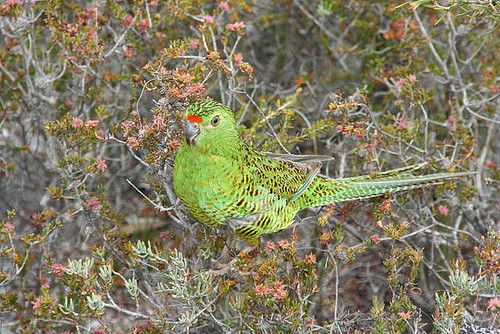Facts About Western ground parrot
The Western Ground Parrot is one of the world's rarest birds, with only about 150 individuals remaining. Native to Western Australia, this endangered species is closely related to both the Eastern Ground Parrot and the elusive Night Parrot. In the Noongar language, it is known as "kyloring."
These parrots resemble their eastern counterparts but can be distinguished by the distinct yellow feathers on their abdomen and under their tails. DNA research indicates that the Western Ground Parrot diverged from the Eastern Ground Parrot approximately 2 million years ago. Initially thought to be a subspecies, it was later recognized as a separate species due to its unique genetic composition.
Once prevalent along the southwestern coast of Australia, the Western Ground Parrot's habitat has now diminished to just two locations along the south coast, primarily in Cape Arid National Park. They thrive in low heathland areas with deep white sand and a high presence of sedges.
The species faces numerous threats, including predation by foxes and feral cats, wildfires, and habitat loss caused by factors such as Phytophthora dieback. The population has plummeted to fewer than 40 individuals, prompting the Australian Government to classify the Western Ground Parrot as critically endangered.
These elusive birds are typically seen feeding alone or in pairs among low vegetation. When startled, they fly low with a distinctive zigzag pattern. Their diet consists of seeds, flower buds, and other plant materials. Breeding involves unique behaviors such as mate-feeding and nest building in low vegetation.
Conservation efforts are underway, including the transfer of some parrots to Perth Zoo for breeding programs. However, the ongoing impact of bushfires remains a significant concern. The survival of the Western Ground Parrot is precarious, and urgent conservation measures are essential to prevent its extinction.
